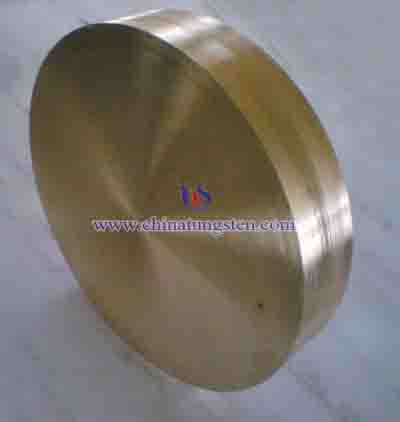Tungsten Copper Process — Mechanical Alloying
Tungsten copper mechanical alloying is a kind of sintering method by high-energy ball milling. After mechanical alloying, on the one hand, it can reduce the metal powder granularity, shorten the rearrangement distance by liquid action, improve the powder uniformity, strengthen the densification and improve W-Cu system sintering characteristic. On the other hand, mechanical alloying can cause serious lattice distortion, high density defects and nano-scale fine structure of the metal powder, so that the thermodynamic and kinetic characteristics of the powder system are deviated from the equilibrium state properties, such as higher surface energy and surface activity , greater sintering driving force and better sintering performance.
Mechanical alloying method for preparing tungsten copper is as follows: Tungsten powder + copper powder → High-energy ball milling (100h, Ar) → Sieving → pressing (40% relative density, 1000~1300℃, H2, 1h) → Sintering. By mechanical alloying method can be easily mass-produced nano-materials, long-term high-energy ball milling treatment, the characteristics of metal powder has changed. The original incompatibility of the metal appears miscible phenomenon. At present, the biggest disadvantage of the mechanical alloyed tungsten-copper composite powder is the impurity brought by ball milling for a long time, which will reduce the conductive and thermal conductivity of tungsten copper after sintering. And the long production circle and low efficiency will restrict the further application in practical processing.

Any feedback or inquiry of Tungsten Copper Alloy Products please feel free to contact us:
Email: sales@chinatungsten.com
Tel.: +86 592 512 9696 ; +86 592 512 9595
